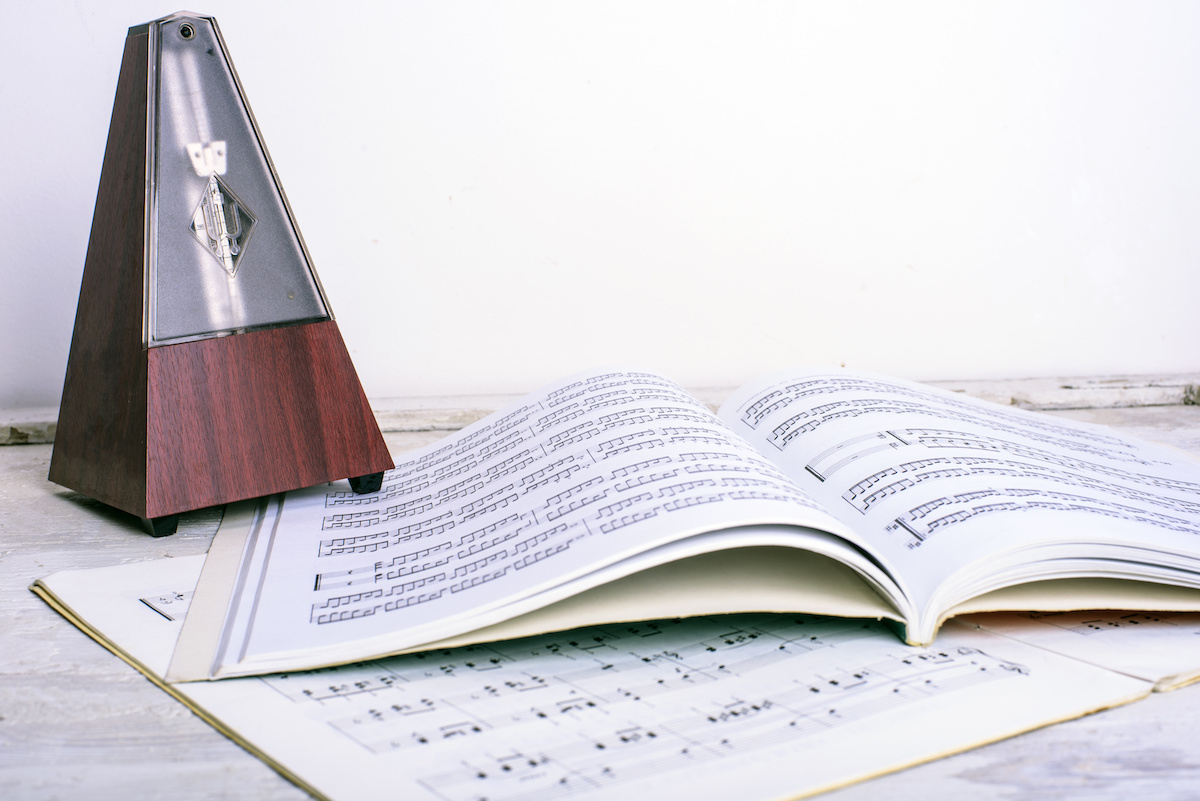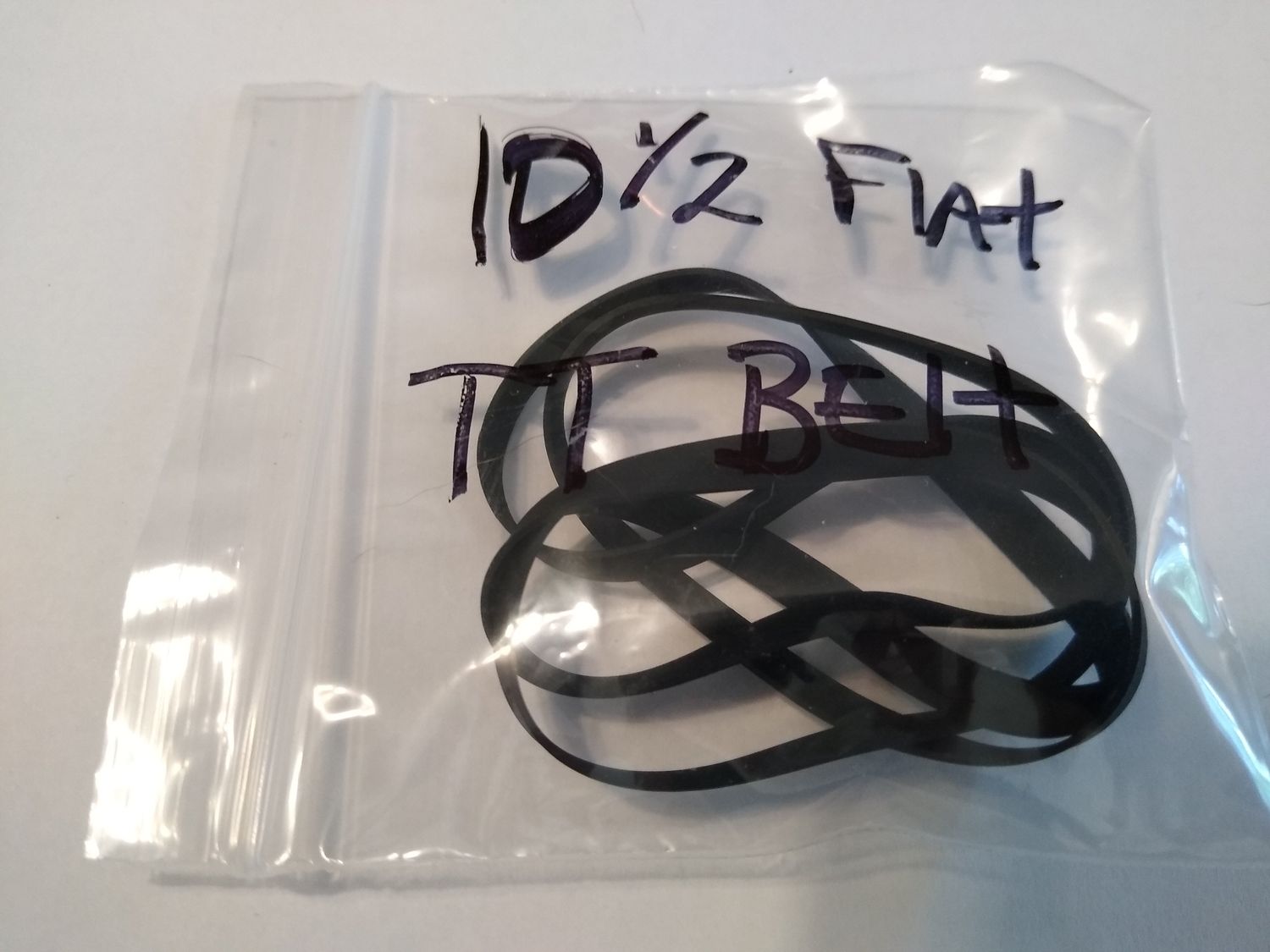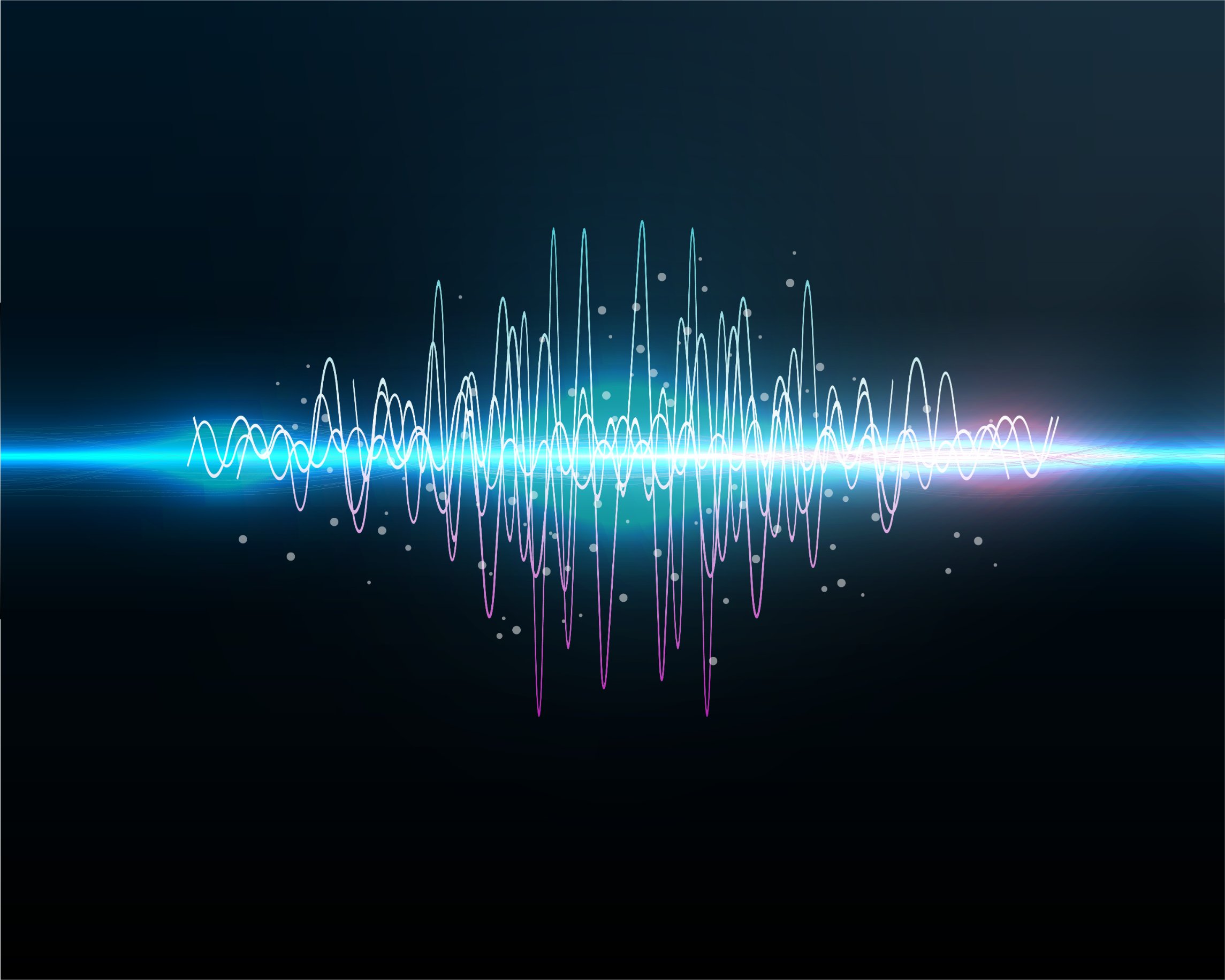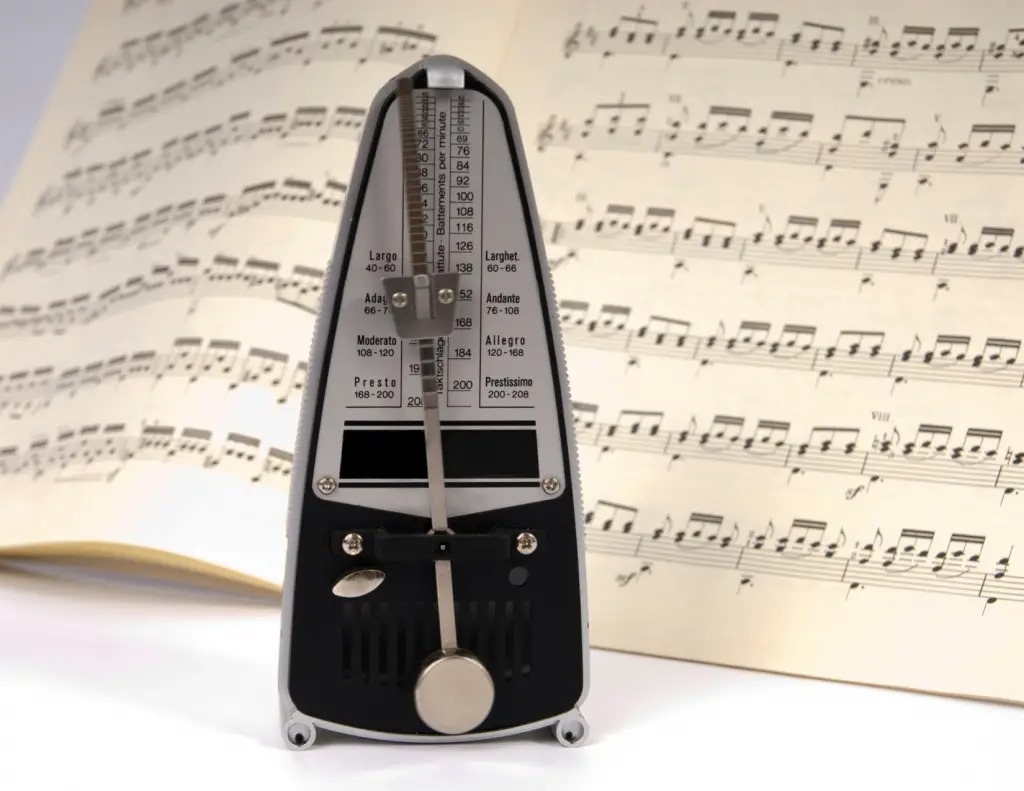Home>Production & Technology>Tempo>How Is Tempo Measured In Music Production


Tempo
How Is Tempo Measured In Music Production
Modified: February 19, 2024
Learn how tempo is measured in music production. Explore the importance of tempo and its impact on creating rhythm and energy in your tracks.
(Many of the links in this article redirect to a specific reviewed product. Your purchase of these products through affiliate links helps to generate commission for AudioLover.com, at no extra cost. Learn more)
Table of Contents
Introduction
Welcome to the world of music production, where rhythm and tempo play crucial roles in creating captivating compositions. Tempo, often referred to as the “pulse” or “beat” of a song, sets the pace and energy for the entire piece. It dictates how fast or slow a musical performance should be and greatly influences the overall feel and mood of the music.
In this article, we will delve into the fascinating realm of tempo measurement in music production. We will explore the traditional techniques used to measure tempo, as well as the advanced tools and technologies available today. Additionally, we will discuss the importance of tempo manipulation and how it can elevate a musical production to new heights.
Whether you’re a seasoned music producer, an aspiring artist, or simply an enthusiast who appreciates music, understanding tempo and its measurement is essential for creating impactful and engaging compositions. So, let’s dive in and explore the intricacies of tempo in the world of music production.
Tempo Definition
Tempo is a fundamental aspect of music that determines the speed at which a piece is performed. It is essentially the rate at which musical beats or pulses occur. The tempo of a song can range from very slow and relaxed to fast and energized, impacting the overall mood and style of the music.
Tempo is typically expressed using a numerical value in beats per minute (BPM). For example, a tempo of 120 BPM means there are 120 beats or pulses in one minute of the song. This numerical representation allows musicians and producers to communicate and synchronize their performances effectively.
The tempo of a composition is often indicated at the beginning of a piece or a specific section using Italian terms such as Allegro (fast), Adagio (slow), Andante (moderate), or Presto (very fast). These terms provide a general guideline for the desired tempo, but using an actual BPM value ensures precision and consistency.
The tempo of a song can greatly influence the emotions it evokes and the overall impact it has on the listener. A faster tempo often creates a sense of energy, excitement, and urgency, while a slower tempo can evoke feelings of calmness, relaxation, or melancholy. Different genres of music tend to have their own typical tempo ranges, with genres like dance or rock favoring faster tempos, while ballads or classical pieces tend to have slower tempos.
Understanding and manipulating tempo is essential for musicians and music producers in order to create compositions that effectively convey the desired emotions and engage the audience. Whether you’re aiming for a foot-tapping dance track or a contemplative ballad, mastering tempo is crucial for achieving the desired impact in your music.
Traditional Tempo Measurement Techniques
Throughout history, musicians and composers have developed various techniques to measure and establish the tempo of a musical piece. These traditional methods relied on human perception and manual execution. Here are some of the most common traditional tempo measurement techniques:
1. Conductor’s Baton: In an ensemble or orchestra setting, conductors use a baton to visually guide the musicians and dictate the tempo through their gestures. The conductor’s arm movements and cues signal the desired speed and dynamics of the performance.
2.
3. Tempo Markings in Sheet Music: Composers often indicate the desired tempo of a composition by including tempo markings in the sheet music. These markings, such as “Moderato” or “Largo,” give a general guideline to the performer regarding the intended tempo.
4. Tapping or Counting: Musicians can manually tap out or count the beats of a piece to establish the tempo. This is often done using a metronome or by simply tapping their foot or hand along with the rhythm.
5. Internal Feel: Experienced musicians develop an internal sense of tempo through years of practice and performance. They rely on their intuition and muscle memory to maintain a consistent tempo throughout a piece.
While these techniques can be effective, they are subjective and rely on the human perception of tempo. This subjectivity can sometimes lead to inconsistencies or variations in tempo, especially in large ensembles or during live performances.
In the modern era, technology has provided more precise and reliable methods for measuring and editing tempo in music production. These advancements have greatly enhanced the accuracy and efficiency of tempo manipulation, allowing producers and musicians to have more control over their compositions.
Metronome
A metronome is a device that produces regular, audible beats at a specific tempo. It is one of the most popular and widely used tools for measuring and maintaining tempo in music production. Metronomes provide a consistent and precise reference for musicians and producers to follow during rehearsals, recordings, and live performances.
Traditional metronomes consist of a mechanical mechanism that produces an audible click or tick at a set tempo. They usually have a pendulum or an electronic oscillator that determines the tempo and triggers the audible beat. The user can adjust the tempo using a dial or a slider on the metronome.
Modern metronomes have evolved and are now available as digital software or mobile applications. These digital metronomes offer additional features and flexibility. Users can choose from various sounds, accents, and time signatures, allowing for more customization and adaptability to different musical styles and preferences.
Metronomes are invaluable tools for musicians, helping them to develop and maintain a strong sense of timing and rhythm. They can be used by individual musicians to practice scales, exercises, or repertoire at different tempos. They are also essential in ensemble settings, ensuring that all musicians are synchronized and playing in unison.
Music producers often use metronomes during recording sessions to help musicians stay on beat and maintain a consistent tempo throughout the performance. They are particularly helpful when recording multiple tracks separately, as they allow for precise synchronization during the mixing process.
Moreover, metronomes can be used creatively in music production. They can inspire rhythmic ideas and serve as a foundation for creating complex rhythmic patterns. Producers can experiment with different accents, subdivisions, and tempo changes to add unique and captivating rhythmic elements to their compositions.
Whether you’re a beginner musician, a professional producer, or someone who simply wants to improve their sense of timing, incorporating a metronome into your practice routine or music production workflow can significantly enhance your skills and precision.
Tempo Mapping and Click Tracks
Tempo mapping and click tracks are essential tools in the process of music production, providing a steady reference for musicians to follow during recordings or performances. They help maintain consistency in tempo and ensure that different parts and tracks are perfectly aligned.
Tempo mapping involves creating a detailed timeline that specifies the tempo changes and variations within a musical composition. This timeline serves as a guide for musicians and producers to synchronize their performances and recordings. Tempo mapping is particularly useful when working with complex compositions that involve tempo changes, rubato (freely varying tempo), or time signature alterations.
Click tracks, on the other hand, are audio tracks that consist of a metronomic click sound at a constant tempo. These click tracks are played through headphones or in-ear monitors for musicians to hear while recording or performing. The click track provides a consistent beat that keeps everyone in the ensemble or while overdubbing tracks in perfect sync.
When recording a song or a composition, the use of click tracks ensures that all instruments and vocals are perfectly aligned with each other. This is particularly crucial when recording different instrumental parts separately or when layering multiple vocal tracks. Click tracks also simplify the editing and mixing process, as the recorded tracks are already synchronized and can be easily rearranged or adjusted if needed.
Tempo mapping and click tracks are not only beneficial during the recording process but can also be used during live performances. Many artists and bands use click tracks to synchronize their performances with pre-recorded backing tracks or to coordinate visuals and lighting effects. This allows for a seamless and polished live show, even with complex arrangements and multimedia elements.
Music production software and digital audio workstations (DAWs) offer powerful tools for tempo mapping and click track creation. Producers can easily map out tempo changes and create click tracks within the project, providing precise and customizable synchronization for musicians and performers.
Overall, tempo mapping and click tracks are integral to the production process, ensuring consistency and synchronization in performances and recordings. They serve as dependable references for musicians, simplifying the recording and editing process, and facilitating seamless live performances.
Tempo Detection Software
Tempo detection software has revolutionized the way tempo is measured and analyzed in music production. This advanced technology uses algorithms and signal processing techniques to automatically detect the tempo of a musical recording or performance.
Tempo detection software can be incredibly helpful when working with existing audio recordings or samples. It allows producers to extract tempo information from the audio and use it as a reference for syncing other elements or for remixing and editing purposes.
One common method used by tempo detection software is beat detection. This technique analyzes the audio waveform and identifies the rhythmic patterns or beats within the music. By analyzing the time intervals between beat occurrences, the software can accurately calculate the tempo of the piece.
Tempo detection software typically provides users with several options for analyzing and adjusting the detected tempo. Users can fine-tune the tempo detection parameters to ensure accuracy, especially in more complex or unconventional musical arrangements.
Tempo detection software has become an indispensable tool for remix artists, DJs, and music producers who work with pre-existing audio recordings. It enables them to precisely match the tempo of different tracks, making seamless transitions and remixes much easier to achieve.
Additionally, tempo detection software is often incorporated into digital audio workstations (DAWs) and music production software. This integration allows producers to automatically detect and sync the tempo of their projects, facilitating collaboration and ensuring consistent timing between different tracks and elements.
While tempo detection software has greatly streamlined the process of tempo measurement, it’s important to note that the accuracy of the results can vary depending on the complexity of the musical content and the quality of the audio recording. Therefore, manual adjustment and fine-tuning may still be necessary in certain cases.
Overall, tempo detection software has made tempo analysis and synchronization more convenient and efficient in music production. It saves time, enhances precision, and opens up creative possibilities for producers and remix artists, allowing them to seamlessly integrate different musical elements and create captivating compositions.
Tempo in MIDI Sequencers
MIDI sequencers have greatly influenced the way tempo is handled and manipulated in music production. A MIDI sequencer is a software or hardware device that allows musicians and producers to record, edit, and playback MIDI data. Tempo is an integral part of MIDI sequencing, providing a framework for precise synchronization and timing control.
In MIDI sequencers, tempo is typically controlled using tempo tracks or tempo events. A tempo track is a designated timeline within the sequencer that contains tempo changes and variations. Tempo events are specific instructions within the MIDI data that dictate the tempo at specific points in the composition.
MIDI sequencers provide flexibility in manipulating tempo throughout a composition. Producers can easily apply tempo changes, accelerandos, ritardandos, or any other desired tempo variations. The ability to precisely control tempo in MIDI sequencers allows for intricate and dynamic compositions.
Furthermore, MIDI sequencers often support the use of tempo automation. This feature enables producers to automate tempo changes throughout the timeline, creating gradual or sudden tempo shifts to enhance the musical expression. Tempo automation is commonly used to build tension or excitement, highlight specific musical moments, or create seamless transitions within a composition.
Tempo in MIDI sequencers also influences the playback and timing of MIDI events and virtual instruments. When playing back MIDI data, the sequencer follows the tempo instructions to ensure that the notes and events are triggered at the correct time. This synchronization is crucial for achieving accurate and realistic performances.
With the advancement of MIDI technology, MIDI sequencers can now also sync with external devices such as drum machines, synthesizers, or hardware sequencers, allowing for seamless integration and timing control across different instruments and devices.
In summary, tempo plays a vital role in MIDI sequencing, providing a framework for timing control and synchronization within a composition. By utilizing tempo tracks, tempo events, and tempo automation, producers can create dynamic and expressive compositions. Whether it’s precision timing for virtual instruments or synchronizing external devices, tempo management in MIDI sequencers is an essential aspect of modern music production.
Tempo Manipulation in Music Production
Tempo manipulation is a powerful technique in music production that allows producers to creatively shape the energy, mood, and flow of a composition. By altering the tempo, producers can transform a simple tune into an energetic dance track or a slow ballad into an epic cinematic piece. Tempo manipulation opens up endless possibilities for artistic expression and experimentation.
One common approach to tempo manipulation is tempo adjustment. Producers can increase or decrease the tempo of a composition to bring about specific effects. Increasing the tempo can create a sense of urgency, energy, and excitement, while slowing it down can induce a feeling of relaxation, contemplation, or even melancholy. Producers often experiment with different tempos to find the ideal pace that enhances the emotional impact of their music.
Another technique in tempo manipulation is tempo modulation. This involves introducing gradual or sudden tempo changes within a composition. Producers can add accelerandos (gradual tempo increases) or ritardandos (gradual tempo decreases) to create tension, build-ups, or moments of release. Tempo modulation adds a dynamic and engaging element to the music, capturing the listener’s attention and creating a sense of movement and progression.
Tempo mapping, as mentioned earlier, is also a part of tempo manipulation. Producers can meticulously plan and map out tempo changes throughout a composition, specifying the exact moments and tempos for different sections. This technique is commonly used in film scoring, where the music needs to perfectly synchronize with specific visual cues or dramatic moments.
In addition to these techniques, tempo manipulation is often employed in remixing and mashup production. Producers can take an existing song and modify its tempo to fit a different genre or style. This allows for creative reinterpretation, resulting in unique and compelling arrangements.
With the aid of modern music production software, tempo manipulation has become more accessible and refined. Producers can easily adjust and automate tempo changes, experiment with different tempo curves, and seamlessly synchronize multiple tracks at varying tempos. This level of control allows for precise and intricate tempo manipulation, giving shape and character to the music.
Overall, tempo manipulation is a vital tool in the arsenal of music producers. It provides the ability to transform and mold compositions to elicit specific emotions, build tension, and create compelling musical experiences. Whether it’s adjusting the overall tempo, introducing tempo modulations, or mapping out tempo changes, tempo manipulation allows producers to push the boundaries of their creativity and convey their artistic vision.
Conclusion
Tempo measurement and manipulation are essential elements in the creative process of music production. Whether you’re a musician, producer, or enthusiast, understanding and harnessing the power of tempo can greatly enhance your compositions and performances.
Traditional techniques such as conductor’s baton, rhythm section, and sheet music markings have provided a foundation for tempo measurement throughout history. However, with the advent of technology, tools like metronomes, tempo detection software, and MIDI sequencers have revolutionized the way tempo is measured and controlled.
Metronomes offer a reliable and consistent reference for musicians, ensuring precise timing and synchronization. Tempo detection software allows producers to extract tempo information from audio recordings, facilitating remixing, syncing, and editing. MIDI sequencers introduce flexibility and creativity by enabling tempo manipulation, automation, and synchronization across various instruments and devices.
Tempo manipulation in music production opens up new possibilities for artistic expression. By adjusting or modulating the tempo, producers can evoke different emotions, build tension, and create engaging musical experiences. Tempo mapping, tempo adjustments, and tempo modulation techniques allow for precise control and refinement in composition and arrangement.
In conclusion, tempo measurement and manipulation are fundamental to the world of music production. Understanding tempo and incorporating it into your creative process can greatly enhance the impact and quality of your compositions. So, embrace the power of tempo and unleash your creativity in the captivating realm of music production.











